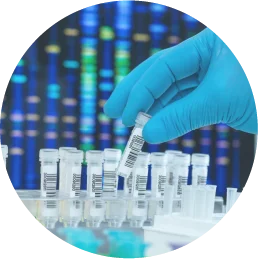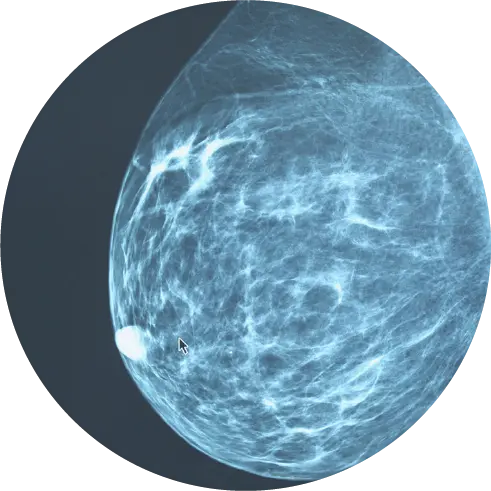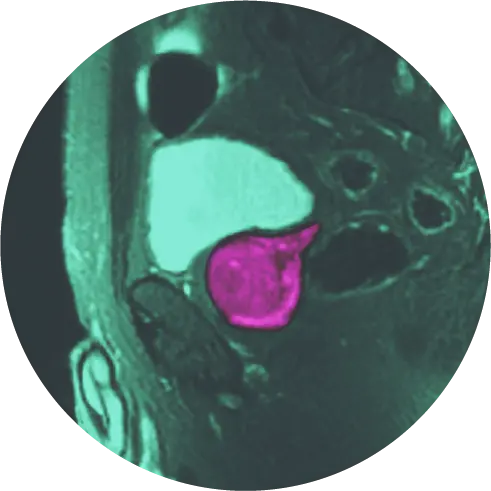Decades of research have shown that early detection and diagnosis of breast cancer play a critical role in successful treatment.
According to the American Cancer Society, breast cancer discovered when it is small and localized is easier to treat successfully. Also, aggressive treatments, such as mastectomy, are less likely to be needed.1
Performing monthly self-exams and getting regular screening tests are the most reliable ways to find breast cancer early. But what happens when an exam or a test detects something suspicious? How is breast cancer diagnosed? This article will review the procedures used to diagnose breast cancer.
Breast Cancer Diagnostic Tools
Breast examination. Every woman should become familiar with how her breasts typically look and feel. If you discover a lump while bathing, dressing, or during a self-exam, you should report it to your healthcare provider. Your doctor will want to check your breasts and nearby lymph nodes, feeling for any abnormalities.2
Mammograms. Regular mammograms can help find breast changes long before any physical symptoms develop. In some cases, these low-dose x-rays of the breasts can detect cancer up to two years before a tumor can be felt by you or your doctor.
The mammogram guidelines below are for women at average risk for breast cancer. A woman is considered at average risk if she doesn’t have a personal or family history of breast cancer or a genetic mutation known to increase breast cancer risk (including the BRCA gene) and has not had chest radiation treatments before the age of 30.
Current recommendations for mammograms are:
- Yearly exams for women starting at age 40
- Screenings should continue for healthy women who expect to live 10 years or more.3
Although mammograms are excellent tools, they are not perfect. For example, they may not detect abnormalities in women with dense breast tissue. In some cases, more than one mammogram may be needed, or your doctor may schedule further testing.4
Breast ultrasound. A breast ultrasound uses penetrating sound waves to create computerized images of structures within the breast tissue. No radiation is involved.
A breast ultrasound can show whether a growth within the breast is a solid mass or one that is filled with fluid. Medical professionals also use this diagnostic tool to help measure the exact size and location of the lump and get a look at the surrounding tissue.5
Biopsy. The next – and most definitive — step your doctor takes in making a breast cancer diagnosis is to perform a biopsy. Having a breast biopsy doesn’t mean you have cancer — most biopsy results are benign. But a biopsy is the only way to know for sure whether or not cancerous cells are present.
A biopsy involves the removal of breast cells for laboratory testing. Guided by sophisticated imaging, your doctor will use a specialized needle device to extract a core of tissue from the suspicious area.
As part of this procedure, a tiny metal marker remains within your breast so the site can be easily identified on any later imaging tests.
At the laboratory, experts analyze the biopsy sample to determine the type of cells involved. If the cells are found to be cancerous, the experts will conduct further studies to determine the aggressiveness of the cancer and whether or not the cancer cells have receptors that may impact treatment options.6
Magnetic resonance imaging (MRI). If you are at high risk for breast cancer or if more information is necessary than the earlier screenings can provide, your doctor may recommend an MRI along with your annual mammogram.
An MRI uses strong magnets to produce detailed, cross-sectional pictures of the breast interior. The MRI scanner takes images of the breast from many angles — from the front, side, and above your head – that are sometimes hard to produce with other imaging tests. No radiation is used.
An MRI requires you to have a contrast dye injected through an intravenous line (IV) line before the procedure. The dye provides a contrast that makes any abnormal areas easier to identify.7
Other Tests Depending on Your Situation
If breast cancer is diagnosed, your doctor may want to conduct other tests to find out more about the cancer and to determine the best course of treatment.
This process, called staging, determines whether the cancer is only in the breast or has spread to nearby lymph nodes or other areas of the body. Breast cancer often spreads – or metastasizes — to the liver, lungs, bones, and brain.
Some of the further tests you might need include:
- Blood tests to determine your complete blood count
- Mammograms of your other breast
- Computerized tomography (CT) scan
- Bone scan
- Positron emission tomography (PET) scan
Breast cancer stages, which range from zero through four, indicate whether the cancer is only in the breast or has spread to other areas of the body. Staging also takes into consideration the presence of tumor markers (including hormone receptors) and factors.8
If you are facing a breast cancer diagnosis, you are likely feeling anxious and overwhelmed. The good news is that there are many options for successful treatment. Consider seeking a second opinion from a breast specialist in a breast center or clinic and talking with other women who have faced the same decisions you are facing.
Is it time for you to take control of your breast health? HALO Diagnostics offers breast screenings at our HALO Breast Care Center in Chico, Silicon Valley MRI in Silicon Valley, Palms Imaging Center in Oxnard, and Precision Imaging Centers’ four locations in and around Jacksonville, Florida.
References
- https://www.cancer.org/cancer/breast-cancer/screening-tests-and-early-detection/american-cancer-society-recommendations-for-the-early-detection-of-breast-cancer
- https://www.mayoclinic.org/diseases-conditions/breast-cancer/diagnosis-treatment/drc-20352475
- https://www.cancer.org/cancer/breast-cancer/screening-tests-and-early-detection/american-cancer-society-recommendations-for-the-early-detection-of-breast-cancer.html
- https://www.cancer.org/cancer/breast-cancer/screening-tests-and-early-detection/american-cancer-society-recommendations-for-the-early-detection-of-breast-cancer.html
- https://www.nationalbreastcancer.org/breast-ultrasound
- https://www.cancer.org/cancer/breast-cancer/screening-tests-and-early-detection/breast-biopsy.html
- https://www.cancer.org/cancer/breast-cancer/screening-tests-and-early-detection/breast-mri-scans.html
- https://www.cancer.net/cancer-types/breast-cancer-metastatic/introduction




